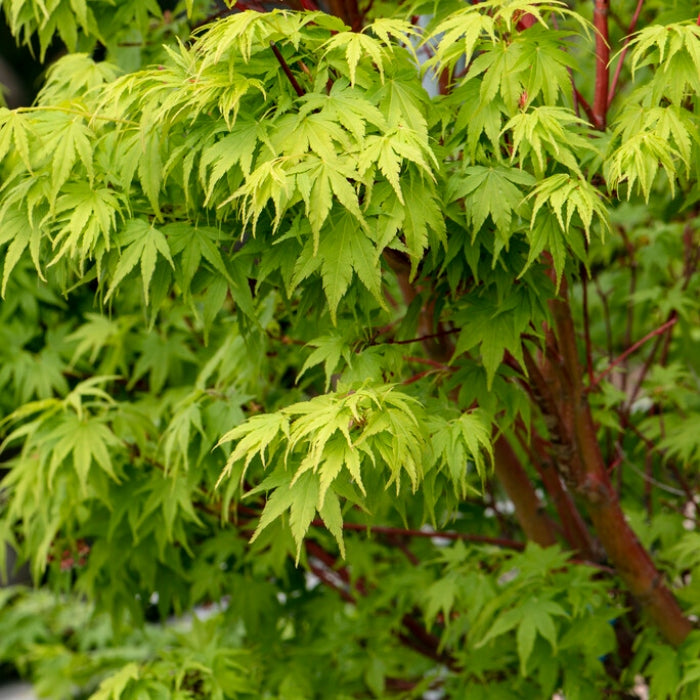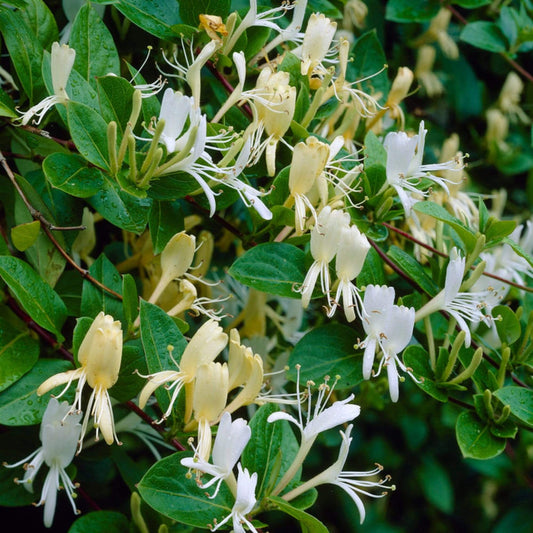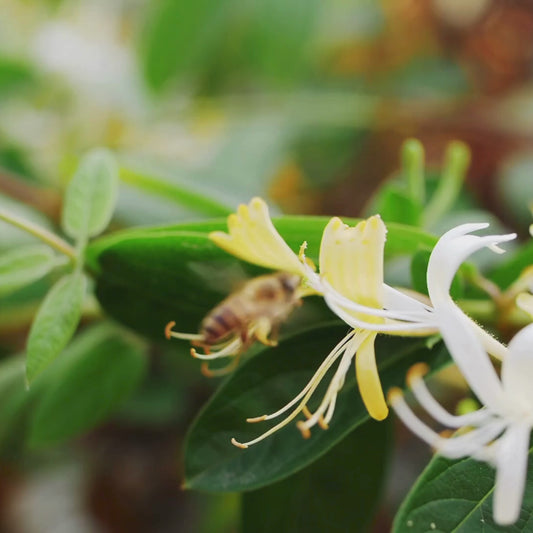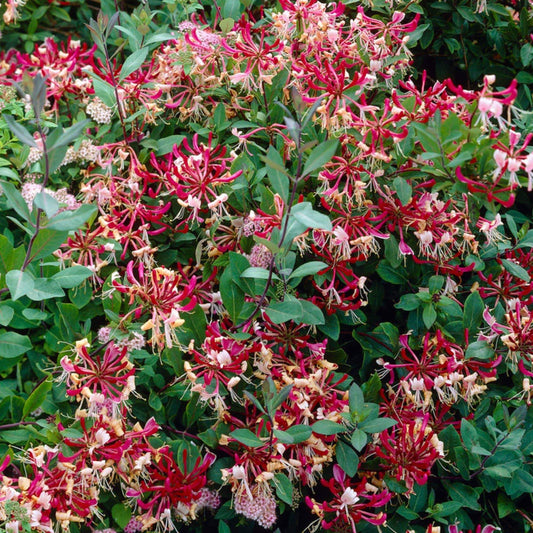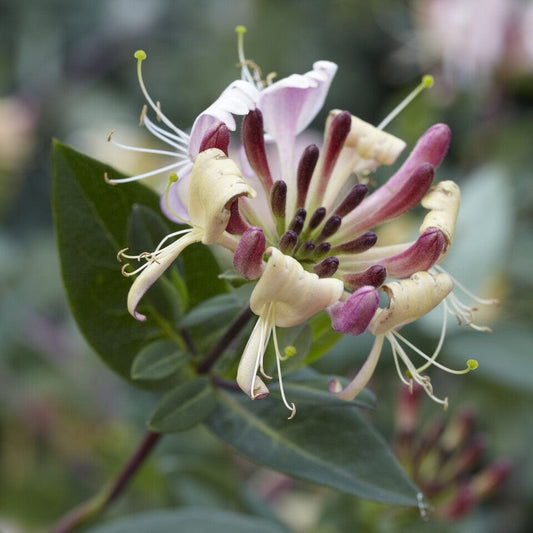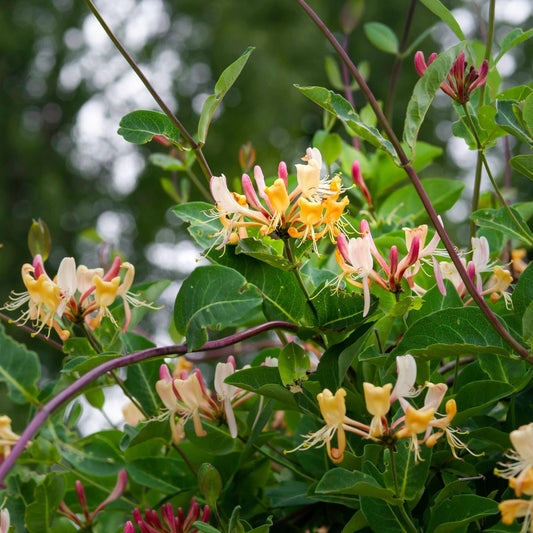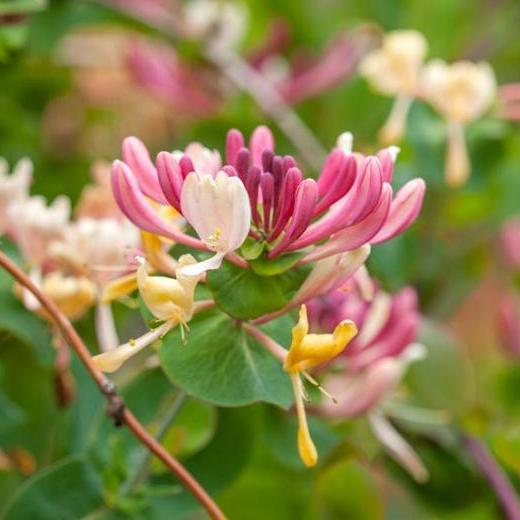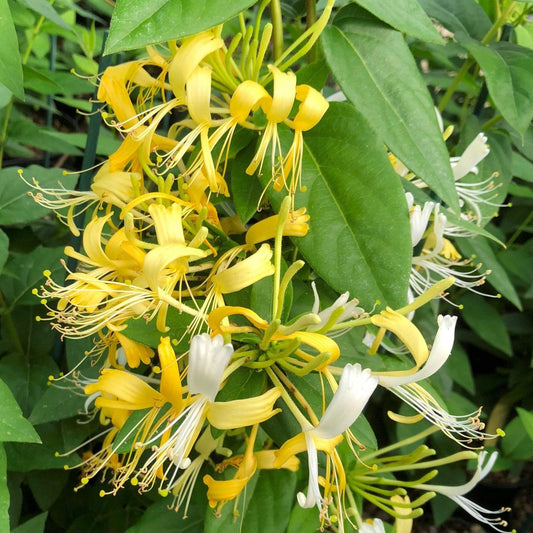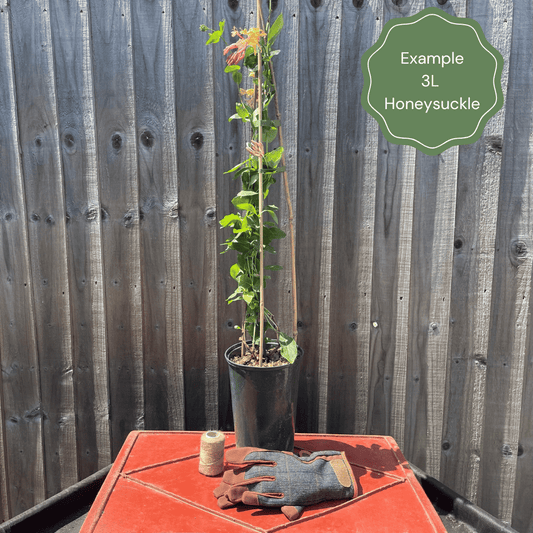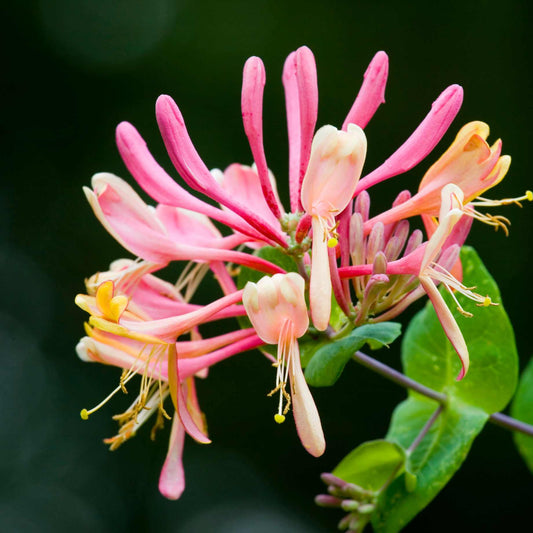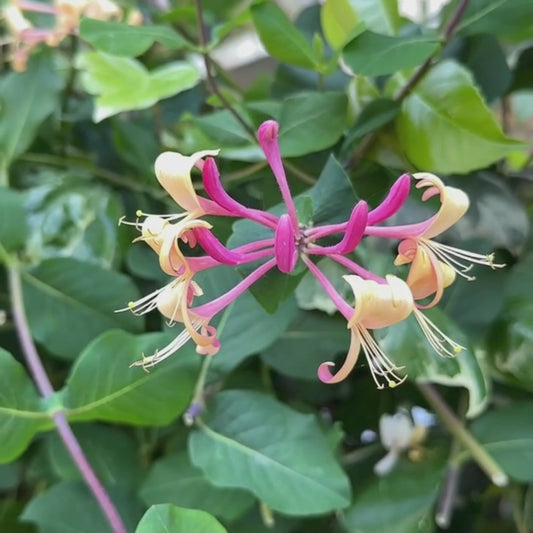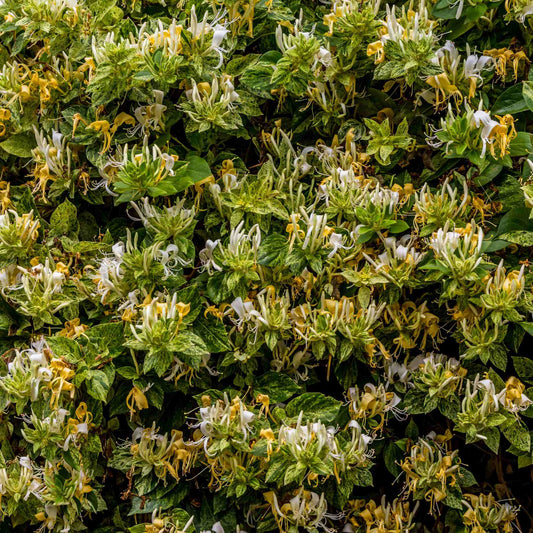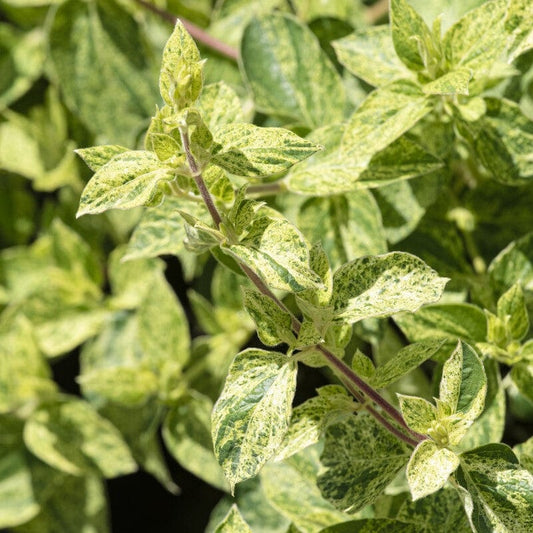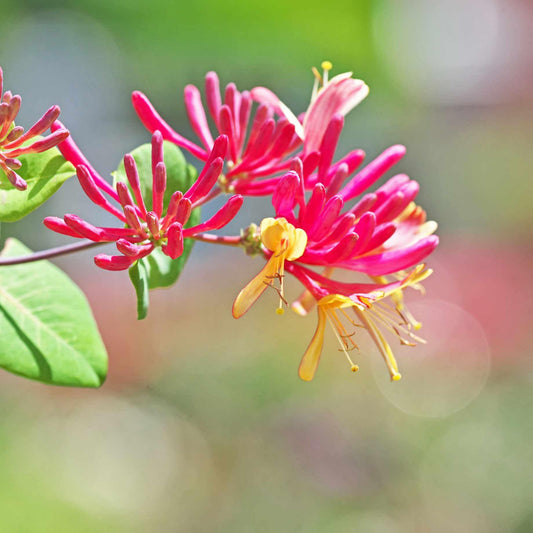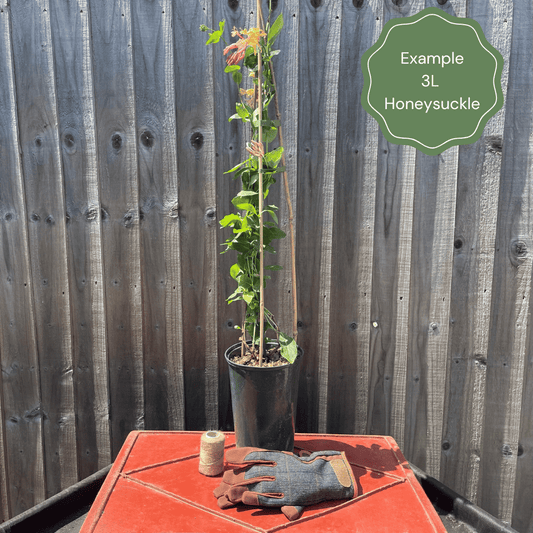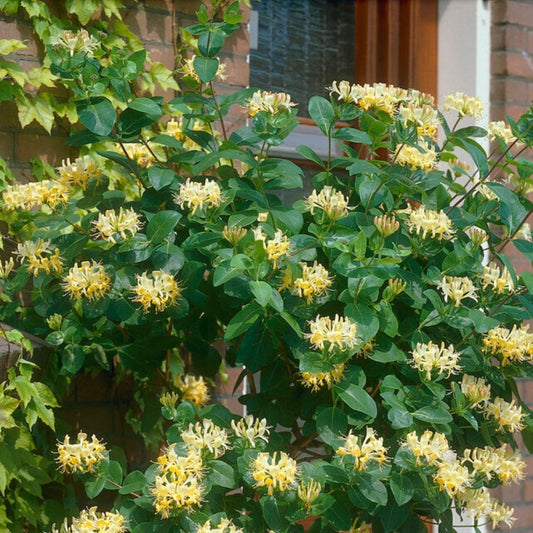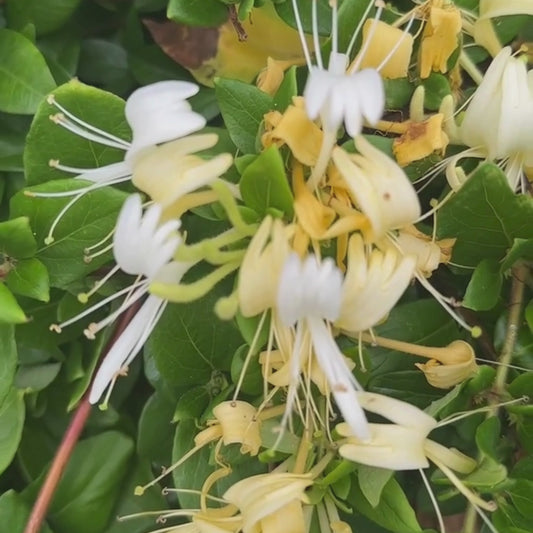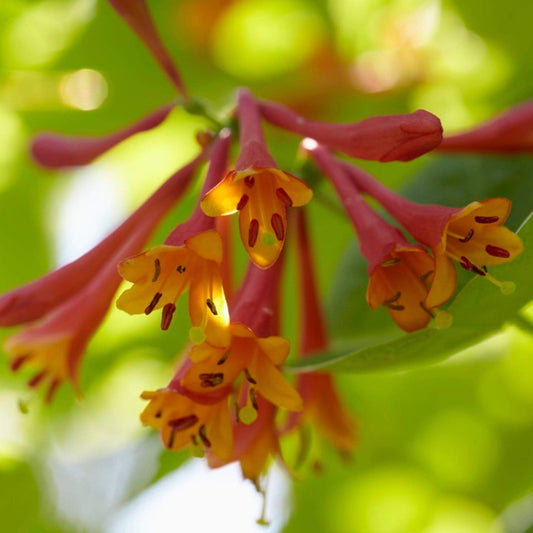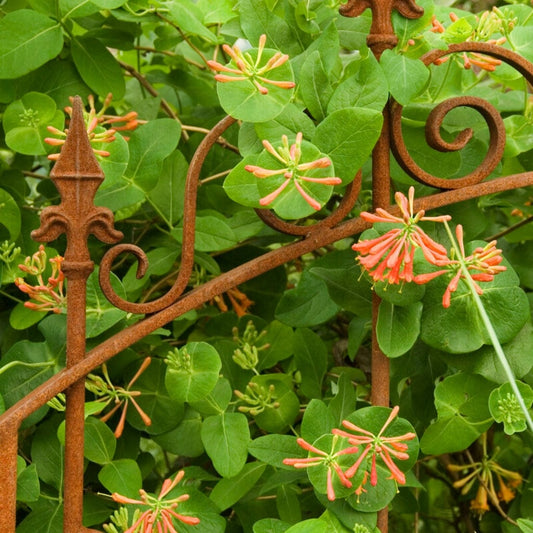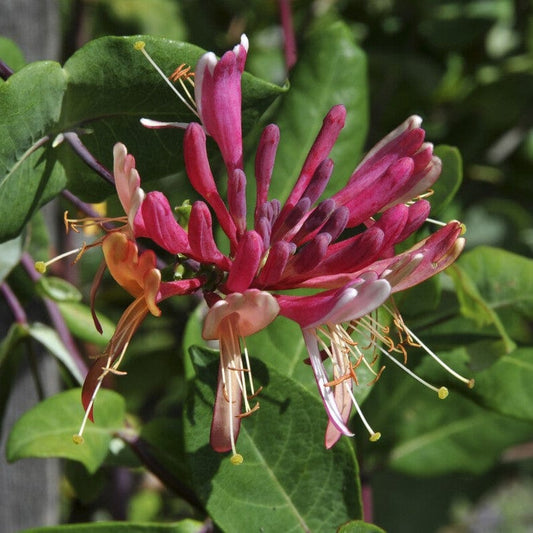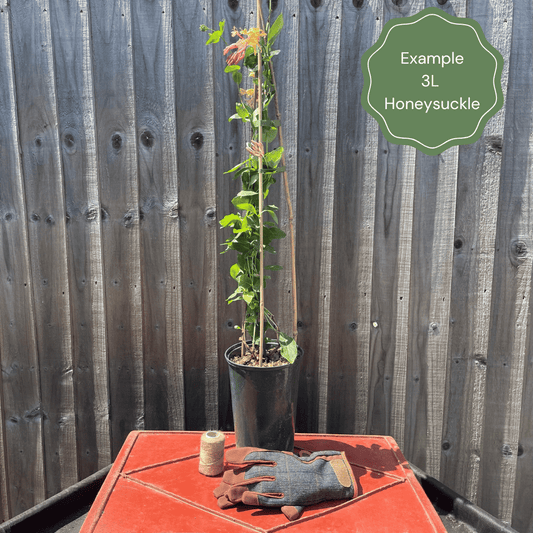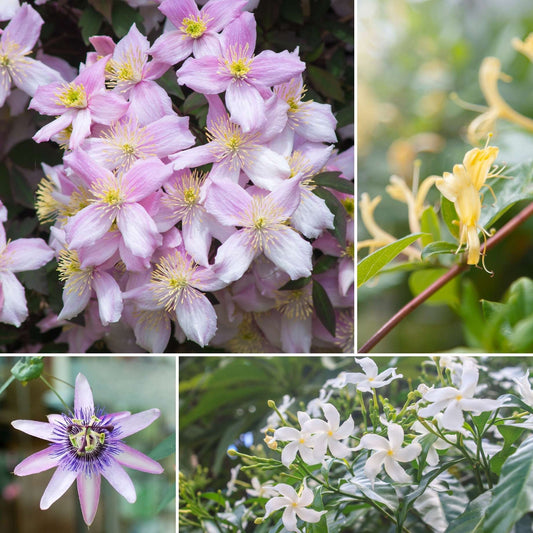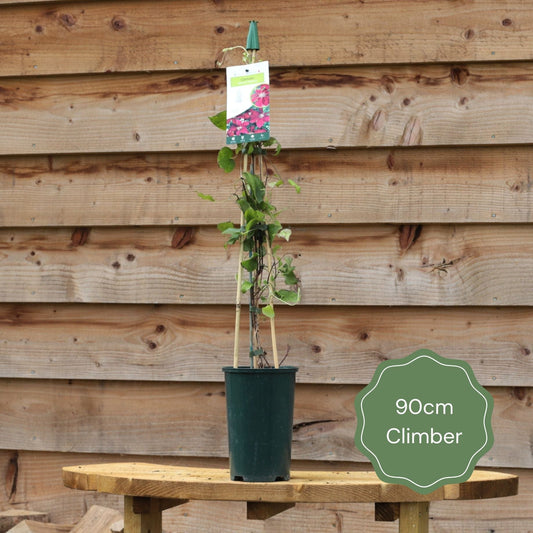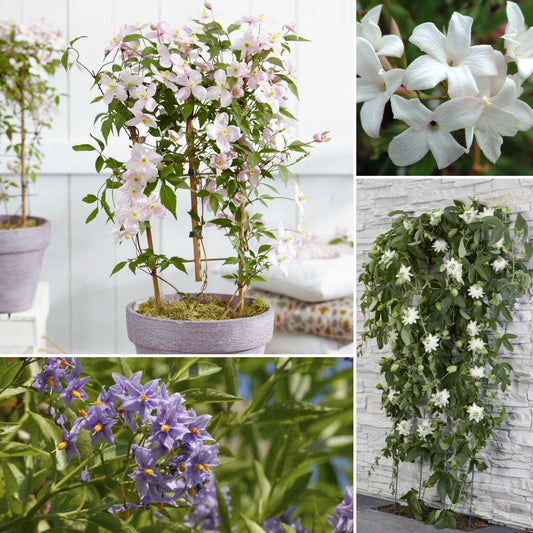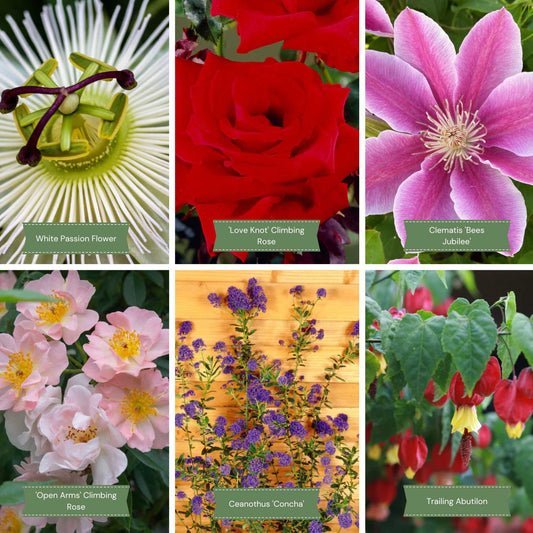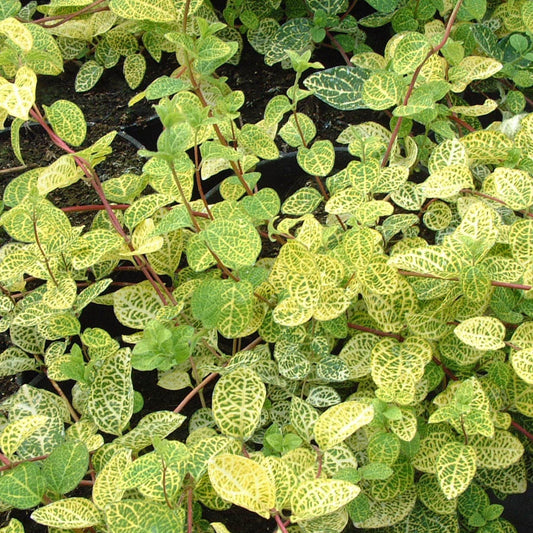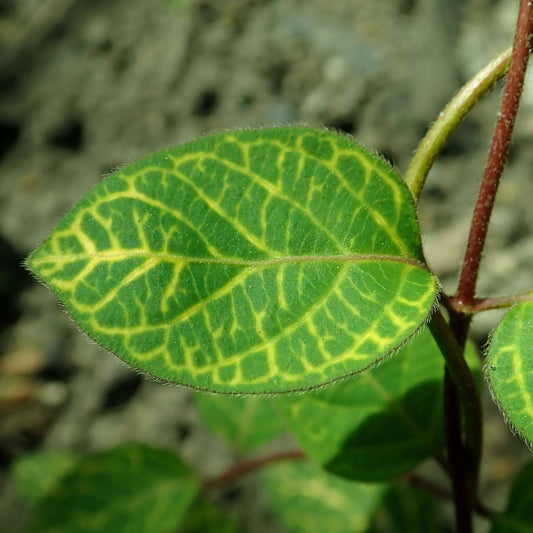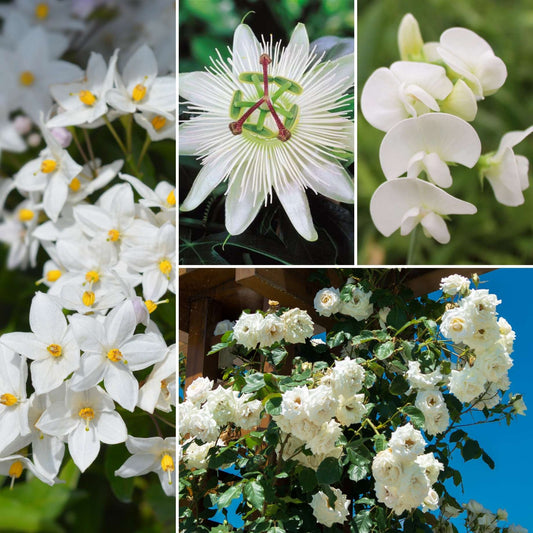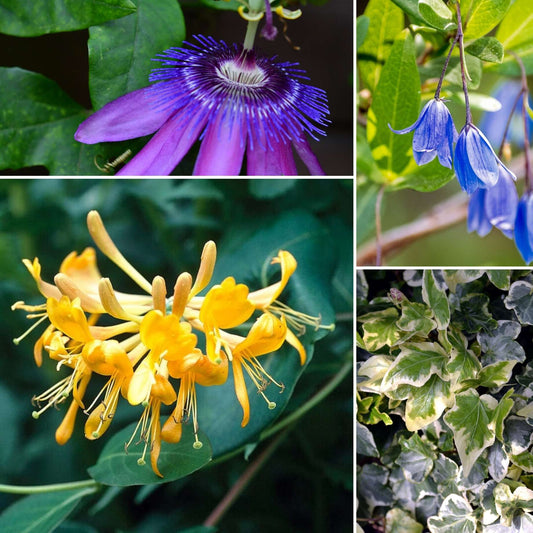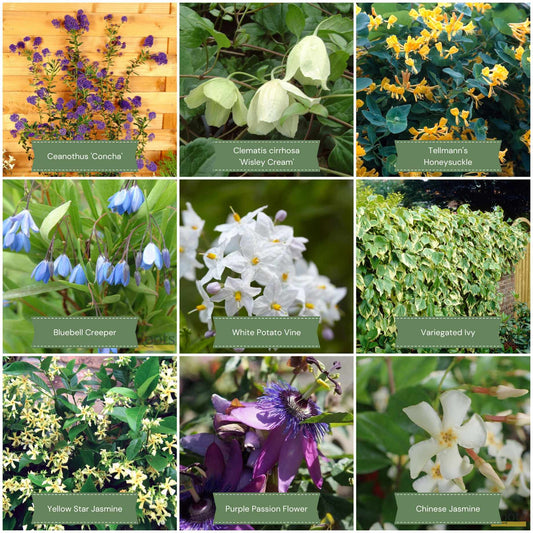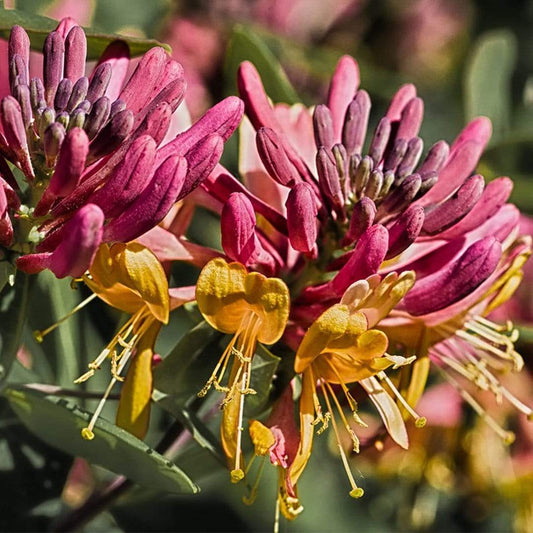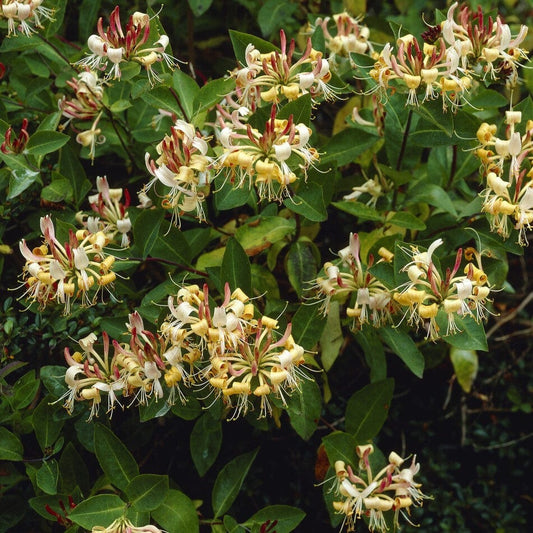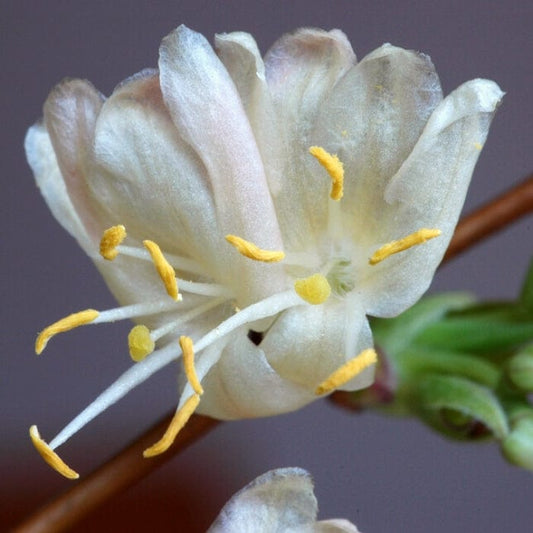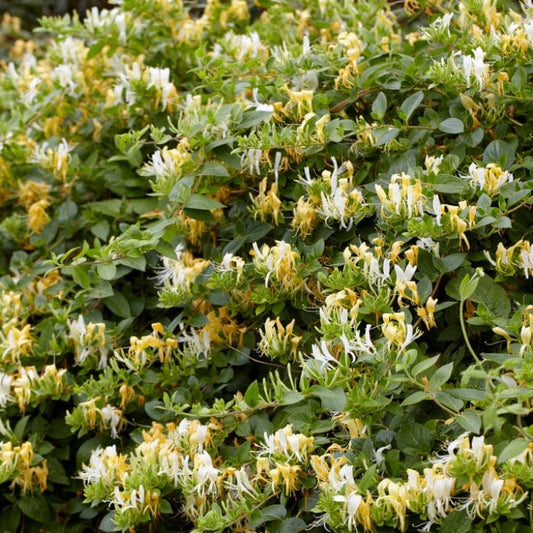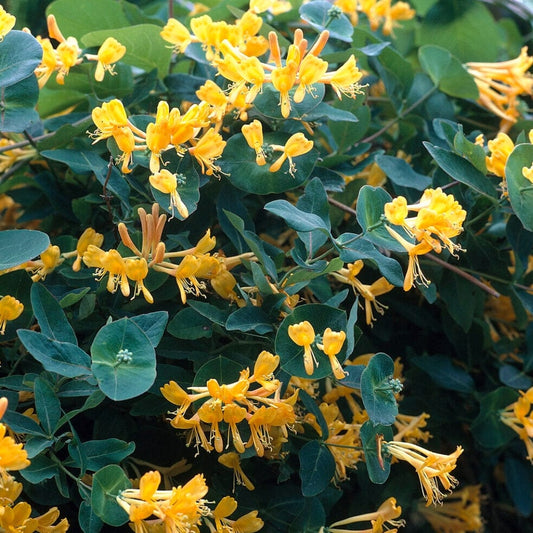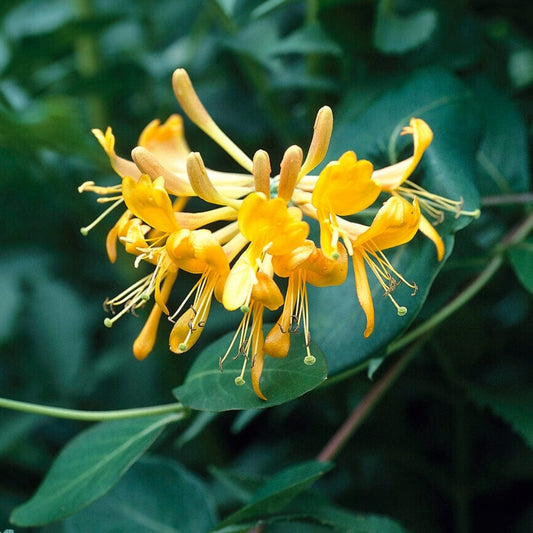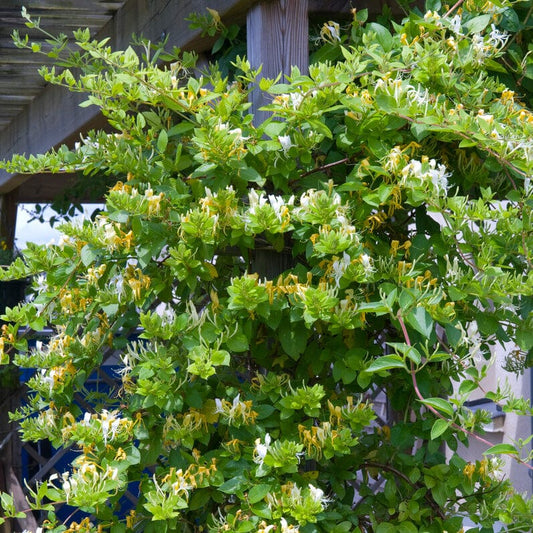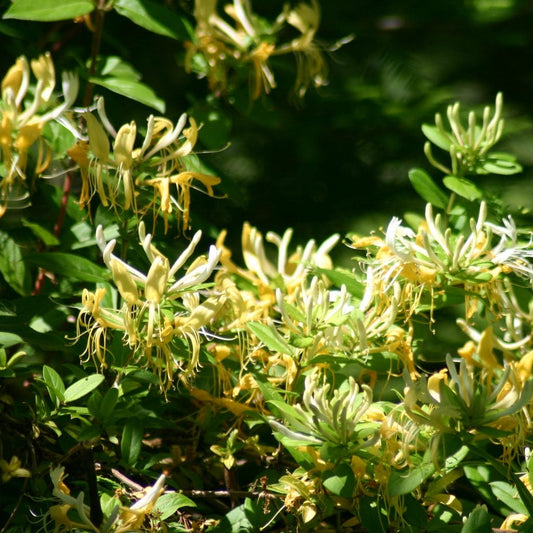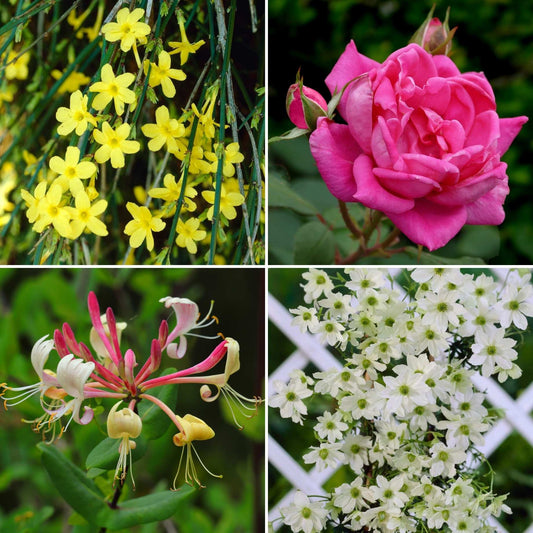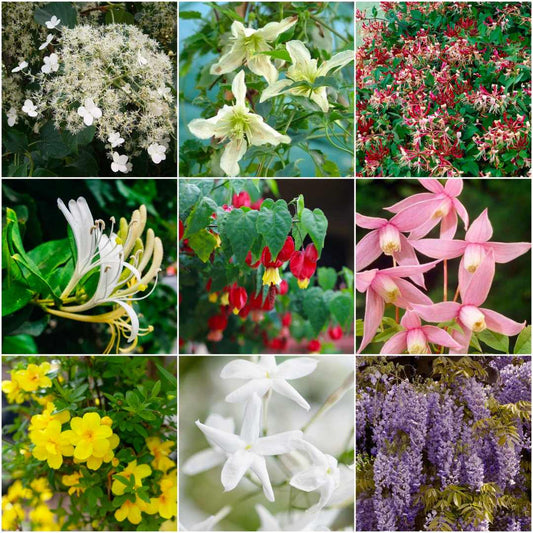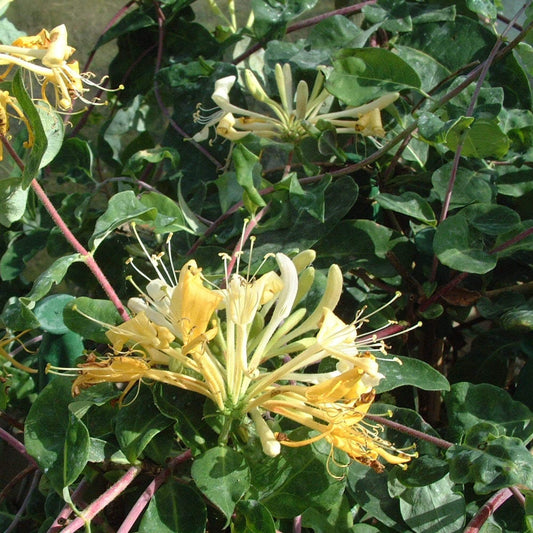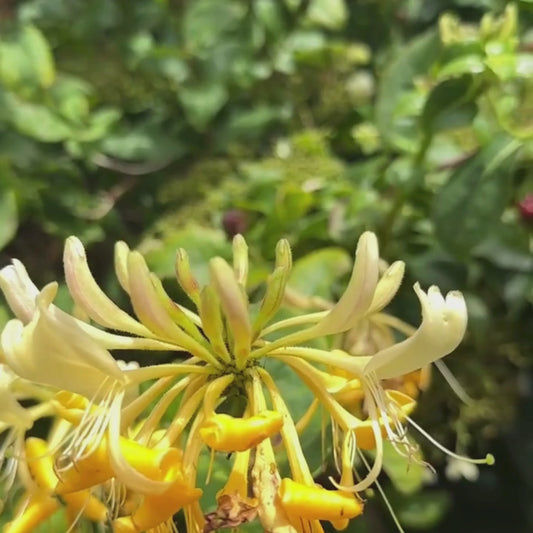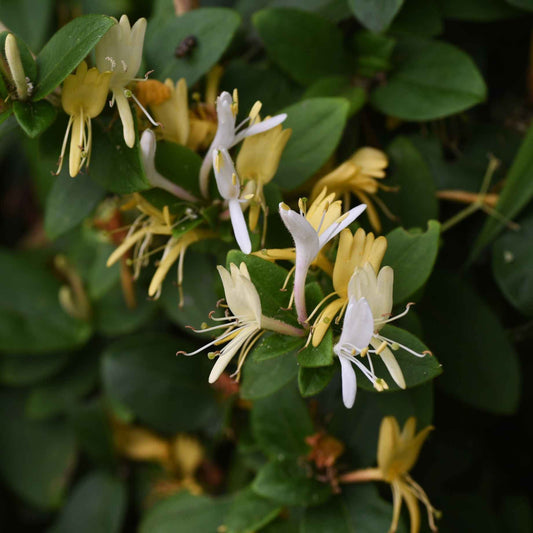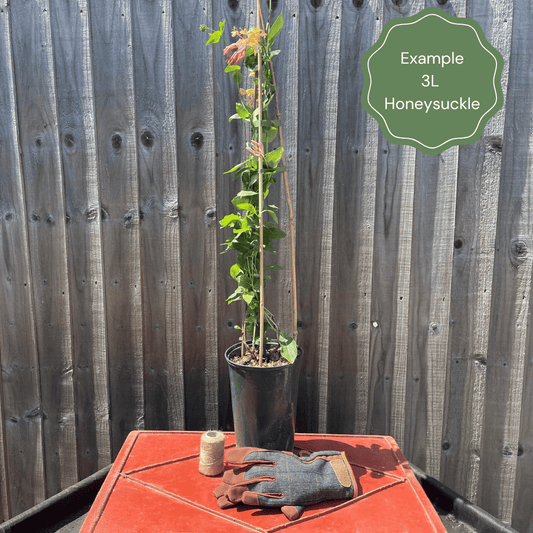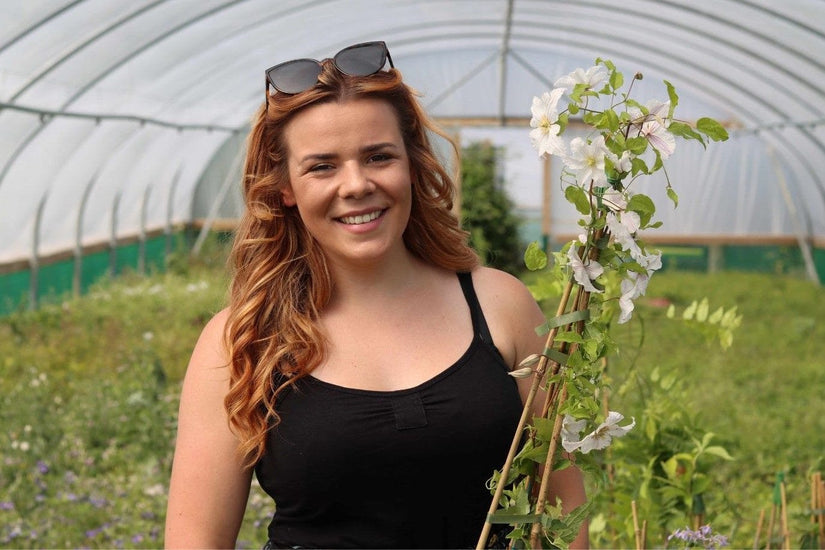Collection: Honeysuckle Plants
Honeysuckle plants are vigorous climbers with clusters of deliciously-scented flowers to attract the bees and butterflies in summer, followed by berries for the birds in autumn. Available in a variety of colours, they’re a must for any garden arch, pergola or fence. Choose from creamy white, sunshine yellow or even scarlet.
Need help picking?-
Regular price From £25Regular price
£30Sale price From £25Hall's Japanese Honeysuckle | Lonicera japonica 'Halliana'
Fragrant evergreen diva
- Butter yellow and white, horn-shaped blooms
- Ideal for training up a pergola or fence
- A woodland plant that likes part shade
- Prolific flowers from July to September
2 options available
-
Regular price From £30Regular price Sale price From £30
Early Dutch Honeysuckle | Lonicera periclymenum 'Belgica'
Myriad fragrant flowers
- Showy red, white and yellow blooms
- Attractive red autumn berries
- Like most honeysuckles, prefers part shade
- Flowers from May to June
2 options available
-
Regular price From £30Regular price Sale price From £30
Late Dutch Honeysuckle | Lonicera periclymenum 'Serotina'
Serotina boosts our serotonin!
- Magenta and yellow, tubular blooms
- RHS Award of Garden Merit winner
- Prefers dappled light or partial shade
- Flowers from July to October
2 options available
-
Regular price From £30Regular price Sale price From £30
Delavay Honeysuckle | Lonicera similis 'Delavayi'
Boasts great mildew resistance
- Lemon yellow and snow white, tubular flowers
- RHS Award of Garden Merit winner
- Grows in both partial shade and full sun
- Long-flowering from June to September
2 options available
-
Regular price From £30Regular price Sale price From £30
'Red World' Japanese Honeysuckle | Lonicera japonica
Powerful pockets of red and pink
- Tubular pink blooms with a creamy interior
- Unbeatable levels of fragrance
- Plant in part (or dappled) shade
- Perfumed flowers from May to August
2 options available
-
Regular price From £30Regular price Sale price From £30
Japanese Honeysuckle | Lonicera japonica 'Mint Crisp'
Majestic marbled foliage
- Gold and white, bugle-shaped blooms
- Trails and twists around an arbour
- Grows best in dappled or partial shade
- Flowers from July to October
2 options available
-
Regular price From £30Regular price Sale price From £30
'Dart's World' Japanese Honeysuckle | Lonicera japonica
This climber hits the bullseye
- Rhubarb and custard-coloured tubular blooms
- Heavily scented blooms
- Dappled or partial shade is ideal
- Free-flowering from April to August
2 options available
-
Regular price From £36Regular price Sale price From £36
European Honeysuckle | Lonicera periclymenum 'G.S. Thomas'
Cascading, pearly-white blooms
- Flaxen yellow, tubular flowers
- RHS Award of Garden Merit winner
- Dappled or part shade is preferred
- Blooms from July to September
2 options available
-
Regular price From £30Regular price Sale price From £30
Scarlet Trumpet Honeysuckle | Lonicera x brownii 'Dropmore Scarlet'
Instant cottage garden charm
- Scarlet-orange, funnel-like flowers
- Dramatic blue-green foliage
- Grows in full sun but prefers a bit of shade
- Yields blooms from July to September
2 options available
-
Regular price From £30Regular price Sale price From £30
'Gold Flame' Honeysuckle | Lonicera heckrottii
Showy, scented trumpet flowers
- Carmine-pink and orange, horn-like blooms
- RHS Award of Garden Merit winner
- Partial or dappled shade is perfect
- Blooms from June to September
2 options available
-
Regular price From £85Regular price
£90Sale price From £85Ultimate Fragrant Climbing Plants Collection
Sweet scents to lift your mood
- Relax in a garden full of beautiful fragrance
- Enjoy notes of vanilla, grape and violet
- Attract bees and butterflies to your garden
- Flowers all the way from May to September
2 options available
-
Regular price From £55Regular price
£60Sale price From £55Patio Climbers Collection | Best Climbing Plants for Pots
Perfect for terrace growing
- Elevate your paved outdoor space
- Train up a wall, pergola or grow in a pot
- Beautiful blooms and alluring foliage
- Attract plenty of pollinators
3 options available
-
Regular price From £30Regular price Sale price From £30
Variegated Japanese Honeysuckle | Lonicera japonica 'Aureoreticulata'
Stunning veined foliage
- Scented ivory blooms, yellow-veined leaves
- Fast-growing and semi-evergreen
- Loves a partially shaded spot
- Blooms from April to August
2 options available
-
Regular price From £85Regular price
£90Sale price From £85White Garden Climbing Plants Collection
Snowy blooms from a height
- A variety of linen-white, showy flowers
- Train your climbers up a wall or obelisk
- Full sun to partial shade (variety dependent)
- Selected for colour, strength and performance
1 option available
-
Regular price From £85Regular price
£90Sale price From £85Evergreen Climbers Collection
Wonderful year-round interest
- Gorgeous foliage and flowers through the year
- Train up a wall, fence, pergola or trellis
- Attract pollinators to your garden
- Enhance privacy and muffle noise
2 options available
-
Regular price From £30Regular price Sale price From £30
Henry's Honeysuckle | Lonicera henryi
Vigorous and utterly beautiful
- Red and yellow, horn-shaped flowers
- Heavenly scent grows stronger in full sun
- Part shade preferred (full sun tolerable)
- Flowers in July and August
Currently out of stock
-
Regular price From £30Regular price Sale price From £30
Sweetest Winter Honeysuckle | Lonicera fragrantissima
Extremely fragrant winter blooms
- Highly-scented creamy flowers, semi-evergreen
- Provides winter interest in beds and borders
- Prefers a partially shaded location
- Flowers from December to March
Currently out of stock
-
Regular price From £30Regular price Sale price From £30
Tellmann's Honeysuckle | Lonicera tellmanniana
Extremely cheery summer blooms
- Golden-orange, trumpet-shaped flowers
- RHS Award of Garden Merit winner
- Likes part shade (can be grown in full sun)
- Flowers from June to September
Currently out of stock
-
Regular price From £40Regular price
£45Sale price From £40Japanese Honeysuckle | Lonicera Japonica 'Chinensis'
Instant atmosphere and fragrance
- White and yellow, scented blooms
- Highly ornamental black berries in autumn
- Grows in both part shade and full sun
- Summer flowering from July to September
Currently out of stock
-
Regular price From £110Regular price
£120Sale price From £110Year-Round Flowering Climbers Collection
Vibrant flowers all year round
- Fill your garden with non-stop colour
- Easy to grow on a trellis, obelisk or pergola
- Available in three 'editions'
- Blooms throughout the year
Currently out of stock
-
Regular price From £30Regular price Sale price From £30
European Honeysuckle | Lonicera periclymenum 'Sweet Sue'
Perfect for smaller gardens
- Cream and yellow, trumpet-shaped flowers
- Perfect coverage for a pergola
- Likes part shade (also grows in full sun)
- Blooms from June to September
Currently out of stock
-
Regular price From £30Regular price Sale price From £30
'Heaven Scent' Honeysuckle | Lonicera periclymenum
Heaven Scent is heaven-sent!
- Chiffon-white and butter-yellow blooms
- Quickly covers a boring fence or wall
- Position in partial shade or full sun
- Tubular flowers from June to September
Currently out of stock
Cheltenham
Meet Mollie
Climbers grown by specialists at the height of their game
What does it take to grow the strongest and best climbing plants in the show tent? Organic fertilisers, natural pest control and years of dedication from Mollie, our expert grower in Worcestershire. Professionally pruned and checked by hand, they’re guaranteed to put on a gold standard display in your garden, too.
Need help picking?

Which honeysuckle plant should you choose?
All honeysuckle vines have a fabulous scent - one of the best is RHS-award-winning 'Serotina'. Flower colours range from ivories and creams ('GS Thomas', 'Mint Crisp') through golden yellows ('Delavayi') to deep crimsons and purples (like 'Belgica'). Most honeysuckles are deciduous (which means more prolific flowering), but for year-round colour, choose evergreen varieties like 'Halliana' or 'Henryi'.

Honeysuckle planting schemes and partners
Our top choice to pair with honeysuckle is a boldly-coloured red or purple clematis. You could also twine two different honeysuckles together on a pergola or trellis for a double hit of that glorious heady perfume (a summer and a winter variety grown together will give you flowers for most of the year). Then, of course, there’s the classic combo of honeysuckle and roses - perfect for a cottage garden. The scent grows stronger in a warm position: plant honeysuckle near a bench or path so you can enjoy it as you relax or walk past.

Honeysuckle growing tips
Honeysuckles are woodland plants, so they do best in a position with their roots in shade and their stems in the sun (a west-facing wall or fence is ideal). These sturdy climbers need a strong support to climb up, such as a trellis or wire frame. Honeysuckle thrives in any well-drained soil, and only needs regular watering during dry spells. To encourage flower production, feed with a general purpose fertiliser in spring. Honeysuckle does need pruning to maintain a neat shape, and this should be done after flowering.
Honeysuckle FAQs
What is the best place for planting honeysuckle?
Honeysuckle will be equally happy growing in a sunny spot or a position with a bit of light shade - ideally they like their roots in shade and their stems in the sun. Our grower recommends planting it near your seating area so you can fully appreciate the heady scent and cool shade of the foliage in summer. The scent grows stronger in a warm position.
When is the best time to plant honeysuckle?
The best time for planting your honeysuckle is in spring or autumn. Planting at these times means that the plant will have time to establish and develop its root system before the onset of cold weather. It’s also fine to plant in summer, although you may not see flowers until the following year.
What’s the best soil for honeysuckle?
Honeysuckle needs soil that is loose and well-draining. To boost growth, dig plenty of compost or well-rotted manure into the soil before planting.
How much water does honeysuckle need?
Honeysuckle plants are drought-tolerant once they’re established (after a year or so) but will need regular watering when newly planted and then during hot and dry spells. The soil should be kept moist but never waterlogged.
How often should I feed honeysuckle?
Feeding your honeysuckle will encourage fresh growth and more flower development. Do this once a year in early spring using a general purpose, slow-release fertiliser, but avoid nitrogen-rich fertilisers, as they tend to promote foliage growth at the expense of flowers.
How do I prune honeysuckle?
Established honeysuckle needs to be pruned to keep it in shape and control its size. After the flowers have finished, trim away any dead, damaged or overcrowded stems, but avoid heavy pruning, as honeysuckle blooms on old wood.
Does honeysuckle need support to grow?
Honeysuckle plants need support to climb up, such as a trellis, fence, or other structure. They will twine around their support as they grow, but you will probably need to train them by tying in the new growth with plant ties.
How fast does honeysuckle grow?
Most honeysuckle varieties are quick to grow, which makes them ideal for covering a wall or fence. Each variety is different, but you can expect an average of between 90 and 180cm of growth in a year.
Can honeysuckle be grown in containers?
Any honeysuckle plant can be grown in a pot, although more compact varieties will do best. Make sure you choose the largest pot available (at least 45cm wide and deep) and provide support wither in the pot or by placing it next to a wall, trellis or fence.
Happy plants make happy customers
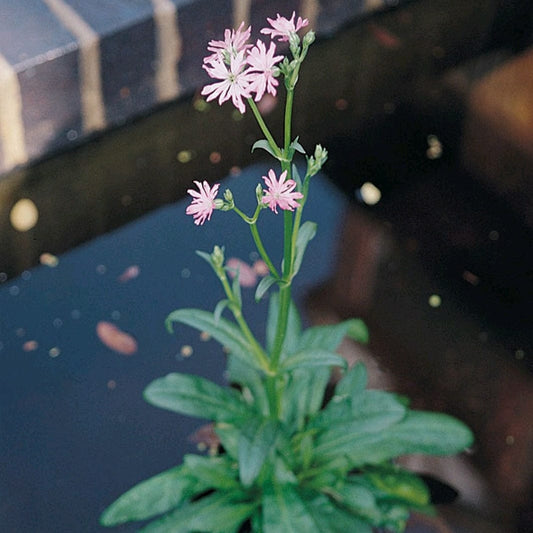
Plants arrived in great condition and very promptly. Well established - much better than the ones I got at my local garden centre.
Monica Spence
| 24 May
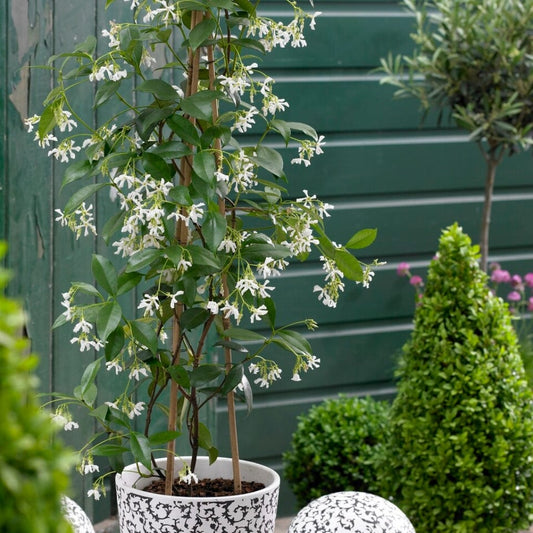
Yet again this company delivered good healthy plants, exactly as shown in photos, well packaged and within delivery time quoted. Recommend!
Jacqueline Burgess
| 2 Jun
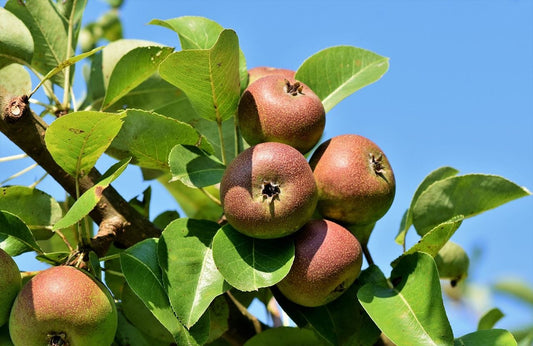
I continue to be so impressed with Roots. Their customer care, knowledge of their subject: from planting hedges to pruning roses and more, has been a great support.
Judy Lane
| 23 Oct
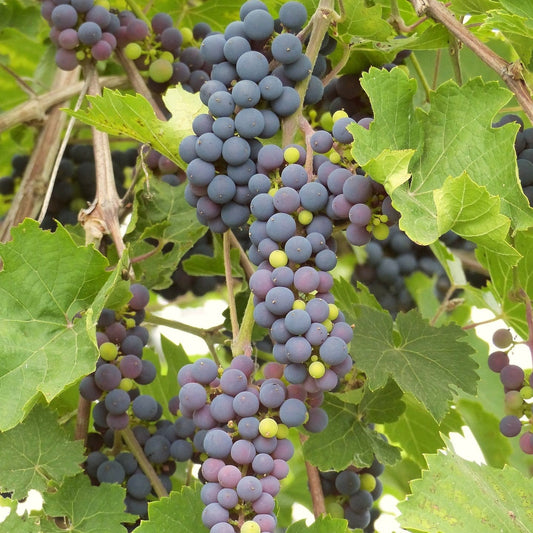
The plant arrived looking vigorously healthy, which brings a smile to your face, extremely well protected in its packaging.
Martyn Hill
| 5 Jul
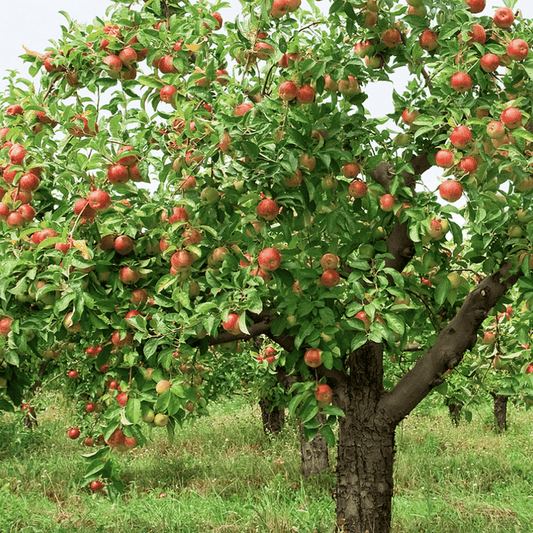
As a non-gardener, I found my whole experience brilliant. Great information & advice available on the website, great range of products & prices are brilliant.
John-Paul
| 22 May

Wonderful plants and great customer service... really surprised to find that the plants are better than those you would get at your local garden centre.
Gavin Wilcock
| 8 Nov
Fighting plastic waste
Delivering fresh from the nursery
Supporting UK growers
